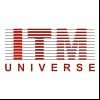TS ECET Mechanical Engineering Syllabus constitues chapters form Mathematics, Physics, Chemistry, and Mechanical Engineering. Some of the important chapters are thermodynamics, heat power engineering, solid mechanics, and more.
TS ECET Mechanical Engineering syllabus 2023 consists of topics from workshop technology, machine and production drawing, manufacturing technology, CAD/ CAM, thermodynamics, manufacturing technology, heat power engineering, and more. 100 questions are concentrated from the mechanical engineering syllabus. Besides, 50 questions are from mathematics, 25 from each Physics and Chemistry.
| TS ECET Syllabus 2023 | TS ECET Exam Pattern 2023 |
TS ECET 2023 Syllabus for Mechanical Engineering
TS ECET Mechanical Engineering syllabus 2023 carries 200 marks in the exam. The rank card will be released for the candidates who qualify for the exam with top marks. The detailed subject-wise syllabus for the state-level entrance exam is mentioned here.
Mechanical Engineering
The TS ECET 2023 Mechanical Engineering carries 100 marks questions in the exam. The entire syllabus TS ECET syllabus for mechanical engineering is discussed below:
Unit-I: Workshop Technology
- Basic Workshop Tools and Operations (Carpentry, Fitting, Marking and Measuring Tools, Forging, and Sheet Metal)
- Drilling, Mechanical Working of Metal, Foundry Equipment, Pattern Types
- Types of Molding Sands and their Properties, Types of Cores, Casting Methods, Defects In Casting, and Special Casting Processes.
Unit-II: Manufacturing Technology
- Lathe and Lathe Work, Broaching Machines, Shaping, Slotting, and Planning. Cutting Fluids, Coolants & Lubricants, Welding Milling, Gear Making.
- Grinding, Surface Finishing Processes. Plastics Processing, Press Tools Jigs and Fixtures, Metrology.
Unit-III: Machine Drawing and Production Drawing
- Machine Drawing: Thread Nomenclature, Specification, Application Areas, and Types of Temporary and Permanent Fasteners: Bolts and Nuts -Keys and Cotters, Rivets and Riveted Joints, Piping Layouts, Different Types of Welds and their Basic Symbols.
- Production Drawing: Limits, Fits & Tolerances, Surface Finish, Specifications of Standard Components Like Bolts, Nuts, and Bearings.
Unit-IV: CAD/CAM
- Cad: Stages of Cad, Input and Output Devices, Display Devices, Types of Cad Software, and Types of Computer Communication Networks.
- Cam: Functions and Benefits of Cam, Capp, the Necessity of Cad/Cam Integration, Basic Components of Nc, Cnc and Dnc Machines, Cnc Part Programming, Manual and Computer-Assisted Part Programming, Cims, Fms, Computer Aided Inspection, and Robotics.
Unit-V: Thermodynamics
- Basic Thermodynamics and Laws of Perfect Gases, Thermodynamic Processes, Fuels, and Combustion
- Air Standard Cycles: Carnot, Otto, and Diesel Cycles
- I.C Engines: Two and Four-Stroke Engines, Petrol and Diesel Engines, Indicated and Brake Powers, Indicated and Brake Thermal Efficiencies.
- Fuel, Ignition, Lubrication, and Cooling Systems.
Unit-VI: Heat Power Engineering
- Air Compressors, Gas Turbines, and Jet Propulsion.
- Properties of Steam, Working, and Performance of Boilers, Steam Nozzles, Steam Turbines, and Steam Condensers.
Unit-VII: Solid Mechanics
- System of Forces, Resolution of Forces, Concept of Equilibrium, Lami's Theorem, Geometrical Properties of Sections, Simple Stresses and Strains, Shear Force and Bending Moment Diagrams, Simple Bending, Deflection of Beams, and Torsion In Shafts.
Unit-VIII: Design of Machine Elements
- Design of Bolts, Screws and Nuts, Shafts, Keys, Couplings, Bearings, Design of Belt and Gear Drives and Cams.
Unit-IX: Fluid Mechanics and Hydraulic Machinery
- Properties of Fluids, Flow of Liquids, Flow Through Pipes, Impact of Jets, Hydraulic Turbines, Governing, Working Principle, and Operation of Reciprocating and Centrifugal Pumps.
Unit-X: Engineering Materials
- Mechanical Properties of Materials, Structure of Materials, Production of Iron and Steel, Iron Carbon Equilibrium Diagram, Heat Treatment Processes, Plain Carbon and Alloy Steels, Ferrous and Nonferrous Metals and Alloys, and Powder Metallurgy.
Unit-XI: Industrial Management
- Principles and Functions of Management, Organization Structures, Production and Materials Management, Marketing Sales and Feasibility Study, Entrepreneurial Development, Principles of Iso 9000, Total Quality Management, Industrial Legislation, and Safety.
Mathematics
TS ECET Mechanical Engineering syllabus 2023 includes mathematics, and 50 questions comes from this part. The detailed syllabus is discussed below:
Unit-I: Matrices
- Matrices: Definition of Matrix
- Types of Matrices-Algebra of Matrices-Transpose
- Matrix Symmetric, Skew-Symmetric Matrices-Minor
- Cofactor of an Element-Determinant of a Square Matrix-Properties-Laplace‘s Expansion-Singular and Non-Singular Matrices-Adjoint and Multiplicative Inverse of a Square Matrix-System of Linear Equations in 3 Variables-Solutions by Cramer‘s Rule
- Matrix Inversion Method-Gauss-Jordan Method.-Partial Fractions: Resolving a Given Rational Function Into Partial Fractions.
- Logarithms: Definition of Logarithm and Its Properties, Meaning of ‘e’, Exponential Function, Logarithmic Function.
Unit–II: Trigonometry
- Properties of Trigonometric Functions– Ratios of Compound Angles, Multiple Angles, Sub Multiple Angles/ Transformations of Products Into Sum Or Difference & Vice Versa.
- Properties of Triangles: Sine Rule, Cosine Rule, Tangent Rule, and Projection Rule, Solution of a Triangle When (I) Three Sides (Sss), (Ii) Two Sides and An Included Angle (Sas), (Iii) One Side and Two Angles Are Given(Saa).
- Inverse Trigonometric Functions, Hyperbolic Functions
- Complex Numbers: Definition of a Complex Number, Modulus, Amplitude, and Conjugate of Complex Number, Arithmetic Operations On Complex Numbers - Modulus-Amplitude Form (Polar Form) - Euler Form (Exponential Form).
Unit–III: Analytical Geometry
- Straight Lines–Different Forms of Straight Lines, Distance of a Point From a Line
- Angle Between Two Lines, Intersection of 2 Non-Parallel Lines and Distance Between 2 Parallel Lines
- Circles Equation of Circle Given Center & Radius
- Given Ends of Diameter-General Equation- Finding Center and Radius
- Center and A Point On The Circumference, 3 Non-Collinear Points
- Center and Tangent, Equation of Tangent and Normal At A Point On The Circle
- Conic Section – Properties of Parabola
- Ellipse and Hyperbola – Standard Forms With Vertex At Origin.
Unit–IV: Differentiation and Its Applications
- Functions & Limits – Standard Limits/Differentiation of Sum, Product, Quotient of Functions, Function of Function
- Trigonometric, Inverse Trigonometric
- Exponential, Logarithmic, Hyperbolic Functions, Implicit, Explicit and Parametric Functions
- Derivative of a Function Concerning Another Function-Second Order Derivatives, Geometrical Applications of The Derivative (Angle Between Curves Tangent and Normal)
- Increasing & Decreasing Functions–Maxima & Minima (Single Variable Functions) Using Second Order Derivative Only Physical Application, Rate Measure
- Partial Differentiation, Partial Derivatives Up to Second Order, and Euler‘s Theorem.
Unit–V: Integration and its Applications
- Indefinite Integral, Standard, Forms Integration By Decomposition of The Integrand
- Integration of Trigonometry, Algebraic, Exponential
- Logarithmic and Hyperbolic Functions, Integration By Substitution
- Integration of Reducible and Irreducible Quadratic Factors, Integration By Parts, Definite Integrals and Properties
- Definite Integral As The Limit of a Sum
- Application of Integration to Find Areas Under Plane Curves and Volumes of Solids of Revolution
- Mean and RMS Values
- Trapezoidal Rule and Simpson’s ⅓ Rule for Approximation Integrals.
Unit–VI: Differential Equations
- Definition of a Differential Equation-Order and Degree of a Differential Equation- Formation of Differential Equations-Solution of Differential Equation of The Type First Order, First Degree, Variable Separable, Homogeneous Equations
- Linear Differential Equation of The Form Dy/Dx+Py=Q
- Bernoulli‘s Equation, 2nd Order Linear Differential Equation With Constant Coefficients Both Homogeneous and Non-Homogeneous and Finding The Particular Integrals for The Functions Eax, Sin Ax, Cos Ax, Ax2 +Bx+C (A, B, C Are Real Numbers)
Unit–VII: Laplace Transforms
- Laplace Transforms (Lt) of Elementary Functions-Linearity Property, First Shifting Property, Change of Scale Property
- Multiplication and Division By T - LT of Derivatives and Integrals, Unit Step Function, LT of a Unit Step Function, Second Shifting Property, Evaluation of Improper Integrals, Inverse Laplace Transform (LLT)-Shifting Theorems
- Change of Scale Property, Multiplication and Division By S LLT By Using Partial Fractions and Convolution Theorem
- Applications of Lt to Solve Linear Ordinary Differential Equations Up to Second Order With Initial Conditions.
Unit–VIII: Fourier Series
- Fourier series, Euler’s formulae over the interval (C, C+2π) for determining the Fourier coefficients, Fourier series of simple functions in(0, 2π) and (–π, π), Fourier series for even and odd functions in the interval (–π, π) – Half range Fourier series – sine and cosine series over the interval (0, π).
Physics
There are 25 questions from Physics for the TS ECET Mechanical Engineering syllabus 2023. The topics include elements of vectors, properties of matter, heat and thermodynamics, mechanics, and more.
Unit-I: Units, Dimensions, And Friction
- Physical Quantity - Fundamental and Derived Quantities Unit, Definitions, S.I Units, Advantages of S.I. Units, Dimensions and Dimensional Formula, Definitions, Units and Dimensional Formula for Physical Quantities, Principle of Homogeneity
- Applications of Dimensional Analysis, Friction, Causes, Types of Friction, Normal Reaction, Laws of Static Friction, Coefficients of Friction, Rough Horizontal Surface, Expressions for Acceleration, Displacement, Time Taken to Come to Rest and Work Done, Advantages and Disadvantages of Friction, Methods to Reduce Friction, Problems On Friction Only.
Unit-II: Elements Of Vectors
- Scalar and Vector Quantities, Definitions and Examples, Graphical Representation of a Vector, Classification of Vectors (Proper Vector, Unit Vector, Equal Vector, Negative Vector, Collinear Vector, and Position Vector), Resolution of a Vector, Triangle Law of Vector Addition, Parallelogram Law of Vectors, Statement Expression for Magnitude and Direction of Resultant Vector, Derivation Illustrations (Working of Sling and Flying Bird)
- Representation of a Vector inUnit Vectors I, J, and K, Scalar Product of Vectors, Definition, Application to Work Done By Force, Properties of Scalar Product, Vector Product of Vectors, Definition
- Right-Hand Thumb Rule and Right-Hand Screw Rule, Application to Moment of Force, Properties of Vector Product, Area of Parallelogram and Triangle in Terms of Vector Product, and Related Problems
Unit-III: Mechanics
- Projectile Motion, Definition, Examples, Horizontal Projection, Time of Flight and Horizontal Range
- Derivations, Oblique Projection, Expression for Path of a Projectile in Oblique Projection Derivation, Maximum Height, Time of ascent, Time of Descent, Time of Flight, Horizontal Range and Maximum Horizontal Range
- Derivations – Circular Motion, Angular Velocity, period and Frequency of Revolutions, Definitions, Relation Between Linear Velocity and Angular Velocity Derivation
- Centripetal Force, Centrifugal Force, Definitions and Expressions Only, Application (Banking of Curved Path), Angle of Banking, Expression Only, and Related Problems
Unit-IV: Properties of Matter
- Elasticity and Plasticity- Definitions, Examples, Stress and Strain, Definitions and Expressions, Elastic Limit, Hooke’s Law, Statement
- Modulus of Elasticity, Young’s Modulus, Derivation, Cohesive and Adhesive Forces, Surface Tension, Illustrations, Capillarity, Angle of Contac, Definition, Examples for Capillarity, The formula for Surface Tension Based On Capillarity (No Derivation)
- Viscosity, Illustrations of Viscosity, Newton’s Formula for Viscous Force, Derivation, Coefficient of Viscosity, Poiseuille’s Equation, Effect of Temperature On Viscosity of Liquids and Gases, Streamlines, Laminar Flow, Turbulent Flow, Reynold’s Number, Equation of Continuity
Unit-V: Heat and Thermodynamics
- Heat, Expansion of Gases, Boyle’s Law, Concept of absolute Zero, Absolute Scale of Temperature, Charles’ Laws, Ideal Gas Equation, Derivation, Value of Universal Gas Constant ‘r’, Isothermal and Adiabatic Processes, Differences Between Isothermal and Adiabatic Processes
- Internal Energy and External Work Done, Expression for Work Done, Derivation, First Law of Thermodynamics, Application of First Law to Isothermal and Adiabatic Processes, Second Law of Thermodynamics, Specific Heat of a Gas, Molar Specific Heat of a Gas, Definitions, Derive Relation Between Cp and Cv , Related Problems.
Unit-VI: Conservation Laws and Energy Sources
- Work and Energy, Potential Energy and Kinetic Energy, Expressions for Pe and Ke, Derivations, Work, Energy Theorem, Derivation, Law of Conservation of Energy, Examples, Law of Conservation of Energy in the Case of Freely Falling Body, Proof, Illustration of Conservation of Energy in the Case of Simple Pendulum, Non-Renewable, and Renewable Energy Sources, Related Problems
Unit-VII: Waves and Sound
- Wave Motion, Definition and Characteristics, Audible Range, Infrasonic and Ultrasonic, Longitudinal and Transverse Waves, Examples, Relation Between Wavelength, Frequency, and Velocity of a Wave, Derivation, Stationary Waves
- Beats, Applications of Beats, Doppler Effect, List The Applications, Ultrasound and Radar in medicine and Engineering As Special Emphasis, Echo, Definition, Applications
- Relation Between Time of Echo and Distance of Obstacle, Derivation, Reverberation and Time of Reverberation, Sabine’s Formula, Free and Forced Vibrations, Resonance, Conditions of Good Auditorium, Noise Pollution, Definition, Causes, Effects and Methods to Minimize Noise Pollution, Problems
Unit-VIII: Simple Harmonic Motion
- Periodic Motion, Simple Harmonic Motion, Definition - Examples, Conditions for SHM, Projection of Circular Motion On Any Diameter of a Circle Is SHM, Expressions for Displacement, Velocity and Acceleration of a Particle Executing SHM, Derivations
- Time Period, Frequency, Amplitude and Phase of a Particle in SHM, Ideal Simple Pendulum, Time Period of Simple Pendulum, Derivation, Laws of Simple Pendulum, Seconds Pendulum, Problems
Unit-IX: Modern Physics
- Photo Electric Effect, Einstein’s Photo Electric Equation, Work Function and Threshold Frequency, Laws of Photo-Electric Effect, Applications of Photo-Electric Effect, Photo Cell, Concept of Refraction of Light, Critical Angle and Total Internal Reflection, Principle of Optical Fiber, Applications of Optical Fiber
- Laser, Definition, and Characteristics, Principle of Laser, Spontaneous Emission and Stimulated Emission, Population Inversion, Examples of Laser
Unit-X: Magnetism
- Magnetic Field, Magnetic Lines of Force, Properties, Uniform and Non - Uniform Magnetic Field, Magnetic Length, Pole Strength, Magnetic Induction Field Strength
- Coulomb’s Inverse Square Law of Magnetism, Expression for the Moment of a Couple On A Bar Magnet Placed in A Uniform Magnetic Field, Expression for Magnetic Induction Field Strength at A Point On The Axial Line of a Bar Magnet
Unit-XI: Electricity and Measuring Instruments
- Ohm’s Law, Ohmic and Non-Ohmic Conductors, Temperature Dependence of Resistance, Coefficients of Resistance With Examples, Specific Resistance, Conductance- Series and Parallel Combination of Resistors
- Moving Coil Galvanometer, Conversion of Galvanometer Into Ammeter and Voltmeter With Diagram (Qualitatively), Kirchhoff’s Current and Voltage Laws in Electricity, Expression for Balancing Condition of Wheatstone’s Bridge, Derivation, Meter Bridge, Working With Neat Diagram, Superconductivity
Unit-XII: Electronics
- Solids, Definition, Energy Bands in solids, Valence Band, Conduction Band and Forbidden Band, Energy Band Diagram of Conductors, Insulators, and Semiconductors
- Concepts of Fermi Level, Intrinsic Semiconductors, Concept of Holes in semiconductors, Doping, Extrinsic Semiconductor - P-Type and N-Type Semiconductors, PN Junction Diode, Forward Bias and Reverse Bias, Applications of PN Diode, Diode As Rectifier, Principle of Light Emitting Diode and Solar Cell.
Chemistry
Fundamentals of Chemistry, acids and bases, water technology, solutions and collides, and electrochemistry are some chapters in chemistry for the TS ECET Mechanical Engineering syllabus 2023. The number of questions from this section is also 25.
Unit-I: Fundamentals of Chemistry
- Atomic Structure: Introduction, Atomic Number, Mass Number, Bohr's Atomic Theory, Aufbau Principle, Hund's Rule, Pauli's Exclusion Principle, Orbitals, Shapes of S, P and D Orbitals, Electronic Configuration of Elements, Chemical Bonding: Introduction
- Electronic Theory of Valency, Types of Chemical Bonds, Ionic, Covalent, and Co-Ordinate Covalent Bonds, Properties of Ionic and Covalent Compounds
- Oxidation-Reduction: Electronic Concepts of Oxidation-Reduction, Oxidation Number Calculations.
Unit -II: Solutions and Colloids
- Introduction-Classification of Solutions Based On Physical State, Molecular Weights, Equivalent Weights, Expression of Concentration
- Mole Concept, Molarity, Normality, Numerical Problems On Mole, Molarity, and Normality
- Colloids, Types of Colloids, Lyophilic and Lyophobic Colloids, Industrial Applications of Colloids.
Unit -III: Acids and Bases
- Theories of Acids and Bases and Limitations, Arrhenius Theory, Bronsted, Lowry Theory
- Lewis Acid-Base Theory, Ionic Product of Water, PH and Related Numerical Problems
- Buffer, Solutions, Buffer Action, Applications of Buffer Solution.
Unit -IV: Environmental Studies-I
- Environment, Scope and Importance of Environmental Studies, Renewable and Non-Renewable Energy Sources, Concept of Ecosystem, Producers, Consumers, and Decomposers
- Biodiversity, Definition and Threats to Biodiversity, Forest Resources, Over Exploitation, and Deforestation.
Unit -V: Water Technology
- Soft and Hard Water, Causes of Hardness, Types of Hardness, Disadvantages of Hard Water, Degree of Hardness, Softening Methods, Permutit Process, Ion Exchange process, Drinking Water, Municipal Treatment of Water for Drinking Purposes
- Osmosis, Reverse Osmosis, Advantages of Reverse Osmosis, Desalination By Electro Dialysis, Defluoridation, and Nalgonda Technique.
Unit -VI: Electrochemistry
- Conductors, Insulators, Electrolytes, Types of Electrolytes, Arrhenius's Theory of Electrolytic Dissociation
- Electrolysis, Electrolysis of Fused Nacl and Aqueous NaCl, Applications of Electrolysis, Faraday's Laws of Electrolysis, Numerical problems.
Unit -VII: Metallurgy
- Characteristics of Metals, Distinguish Between Metals and Non-Metals- Ore, Gangue, Flux, and Slag, Concentration of Ore, Froth Floatation, Methods of Extraction of Crude Metal, Roasting, Calcination and Smelting, Alloys, Purpose of Making Alloys, Composition of Brass, German Silver, Nichrome, Stainless Steel, and Duralumin
Unit –VIII: Corrosion
- Factors Influencing The Rate of Corrosion, Electrochemical Theory of Corrosion, Composition, Concentration Cells, Rusting of Iron, Its Mechanism, Prevention of Corrosion, Coating Methods, Paints, Constituents, Characteristics of Paints, Cathodic Protection
Unit –IX: Polymers
- Polymerization - Types of Polymerization, Addition, Condensation With Examples
- Plastics - Types of Plastics - Advantages of Plastics Over Traditional Materials, Disadvantages of Using Plastics - Preparation and Uses of The Following Plastics: 1. Polythene 2. Pvc 3.Teflon 4.Polystyrene 5.Urea Formaldehyde 6. Bakelite
- Rubber - Elastomers -Preparation of Butyl Rubber, Buna-S Rubber, Neoprene Rubber and their Uses-Fibres-Preparation and Uses of Fibres-Nylon 6, 6- Polyester
Unit –X: Fuels
- Definition and Classification of Fuels- Characteristics of Good Fuel, Calorific Value-HCV and LCV Calculation of Oxygen Required for Combustion of Methane and Ethane,
- Composition and Uses of Gaseous Fuels - A) Water Gas, B) Producer Gas, C) Natural Gas, D) Coal Gas, E) Bio Gas, and F) Acetylene.
Unit –XI: Electro-Motive Force
- Galvanic Cell, Standard Electrode Potential, Electro Chemical Series, EMF of Cell, batteries, Types of Batteries, and Fuel Cells.
Unit –XII: Environmental Studies-III
- Classification of air Pollutants Based On Origin and States of Matter - Air Pollution, Control Methods - Water Pollution, Causes and Effects - Control Measures.
Quick Link:
| TS ECET Mechanical Engineering Syllabus 2023 PDF | Download Now |
TS ECET Mechanical Engineering Best Books
TS ECET 2023 syllabus for mechanical engineering is available both online and offline. Candidates can refer to the book list below for their preparation.
| Books | Publishers |
| Mechanical Engineering Objective Type With Detailed Synopsis | Falcon Publishers |
| E-CET Mechanical Engineering book along with Mathematics, Physics and Chemistry (MPC) | |
| Mechanical Engineering Including the Latest Examination Papers and Model Papers with Answers and Explanations | Radiance Publishers |
| Mechanical Engineering with Solutions, 2 Model Papers and 11+ Years Previous QPs with Solutions | SIA Publishers and Distributors |
TS ECET Mechanical Engineering Preparation Tips
Candidates must know the tips to prepare for TS ECET mechanical engineering syllabus. Here are some of the suggestions given by the toppers to ace the exam.
- Candidates must know the exact exam pattern and detailed syllabus of TS ECET. Further, there are options to download the official syllabus; candidates must avail.
- Next, candidates must download the sample and the previous year's question papers. These are great sources of knowledge.
- Candidates must also download mock test papers or appear for them. It will boost their confidence and help them prepare better.
- Further, candidates must revise the syllabus before the exam to score good marks in the TS ECET exam.
Also Read: TS ECET Preparation 2023























